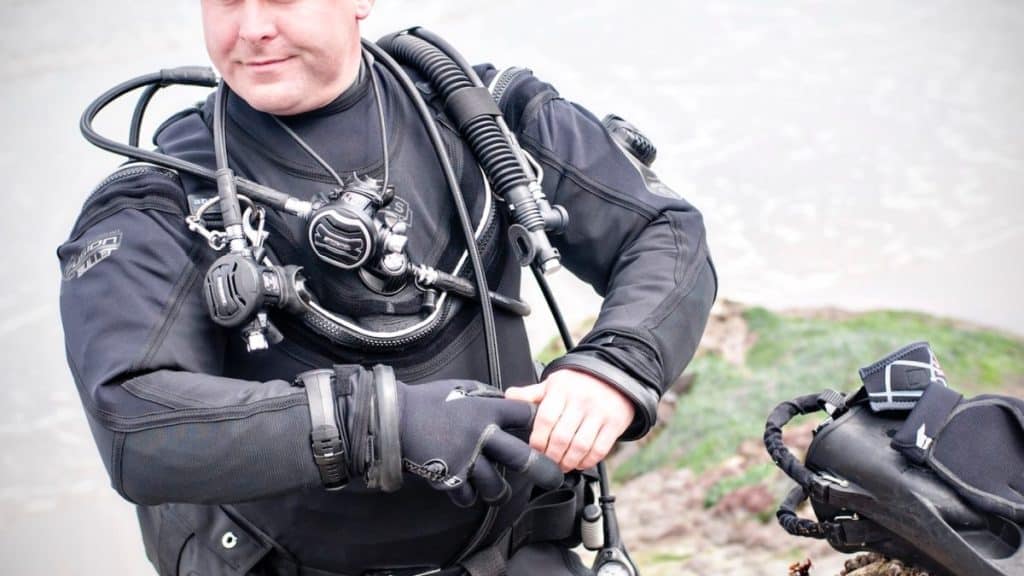A drysuit is an environmental suit that protects the wearer with thermal insulation and water-repelling fabric. This ensures the wearer stays dry and adequately warm throughout their dives, even in the coldest waters.
But how do you choose the best men’s drysuit for your adventure? Here are three features you should consider:
1. Type of Fabric
Most drysuits fall into two fabric categories:
- Neoprene: Neoprene is a thick fabric that absorbs some water, but doesn’t allow the water to penetrate all the way through to your skin. The thick fabric is incredibly insulating and is similar to what is used in most wetsuits. Neoprene suits also tend to hug closer to your form, allowing for only a very thin layer of additional layering underneath.
- Laminate: Laminate fabric welds together various types of fabric to provide optimal insulation. This usually involves a water-repellent layer on the outside and a water-proofed insulating layer on the inside. Other laminate drysuits include a third layer of fabric that doesn’t allow any water to get through. These drysuits usually have more room to put on extra layers.
Laminate drysuits are generally better suited for colder climates, as you can add additional layers underneath. So if you plan on diving in water that’s below 60 degrees Fahrenheit, laminate might be the best option for you.
2. Fit of the Drysuit
Some divers prefer a looser fit to their drysuit. This does not mean the suit is too big for them—there should always be a tight seal around your wrists and ankles. Rather, loose suits are baggier in the legs, arms, and torsos, so you can add additional layers.
Loose suits also allow for added mobility, as the tight fabric doesn’t constrict your body. The added space for insulation is also ideal for colder temperatures.
If you aren’t going to use your drysuit for insanely cold temperatures or plan to use it for water sports other than diving, a tighter-fitting drysuit may be better. This reduces the extra fabric’s risk of catching and tearing on protruding rocks and hanging branches.
3. Pockets and Zippers
Finally, how many zippers and pockets do you want on your drysuit? On a scuba drysuit, it’s nice to have some zipper pockets to carry extra gear, such as a diving knife or diving compass. And if you find any interesting objects on your dive, you’ll have a place to put them.
Find the Perfect Drysuit
Adventure is out there, and you’ll need to be equipped with a drysuit to take the journey. Use these three factors to determine which kind of drysuit is best for you. Once you’ve decided, shop for your ideal men’s drysuit.

